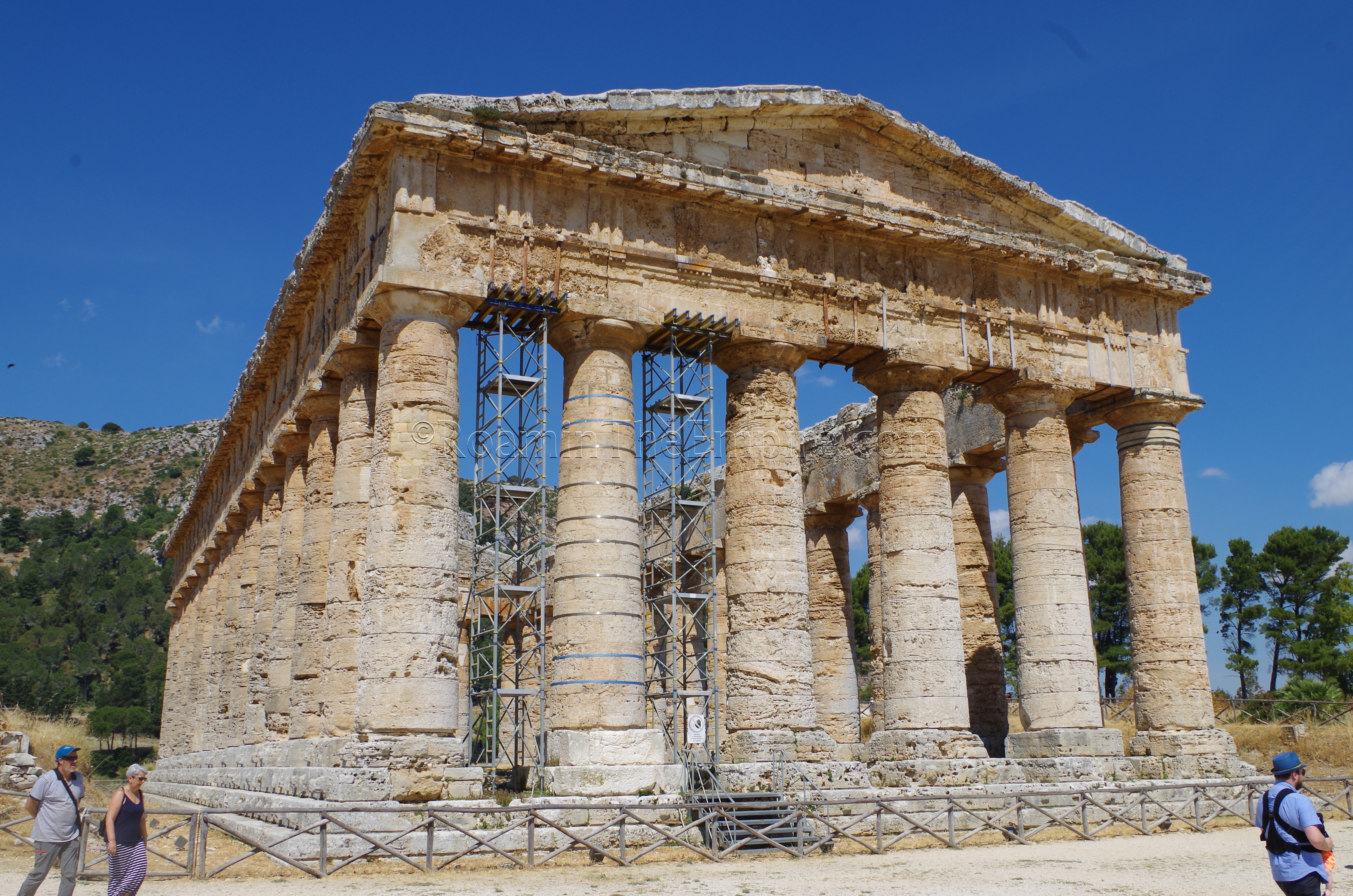
Most Recent Visit: May 2017.
Well removed from any modern settlements is the ancient remains of Segesta. Like Eryx, Segesta seems to have been one of the major settlements of the Elymian people of Sicily, and served as the political center of the Elymians. Also, like Eryx, the name of the city seems to have a mythological connection with supposed origins of the people who inhabited. Alternatively, the city of Cegesta called Aegesta, Egesta, or even Acesta, particularly in the centuries prior to the arrival of the Romans. According to a myth that is related in part in the Aeneid, Egesta or Segesta was a Trojan woman who was sent to Sicily by her father to avoid being devoured by monsters, a consequence that might have befallen her due to the Trojans refusal to reward Poseidon and Apollo for helping to build the walls of Troy. In Sicily Segesta was impregnated by the river god Crimisus (the river of which he is associated is possibly the modern Fiume di San Bartolemeo that runs nearby), in the guise of a bear or a dog, and she gave birth to Acestes, or Aegestus. He, along with some of Aeneas’ companions founded the city. Dionysus tells a bit of a different tale with Aegestus’ grandfather being killed by Laomdeon, who then sent his mother to Sicily where she gave birth to him. During the Trojan War, Aegestus returned to fight for Troy, and afterward returned to Sicily. Upon his arrival in Sicily, Aeneas built the cities of Elyme and Segesta for Elymus and Aegestus.
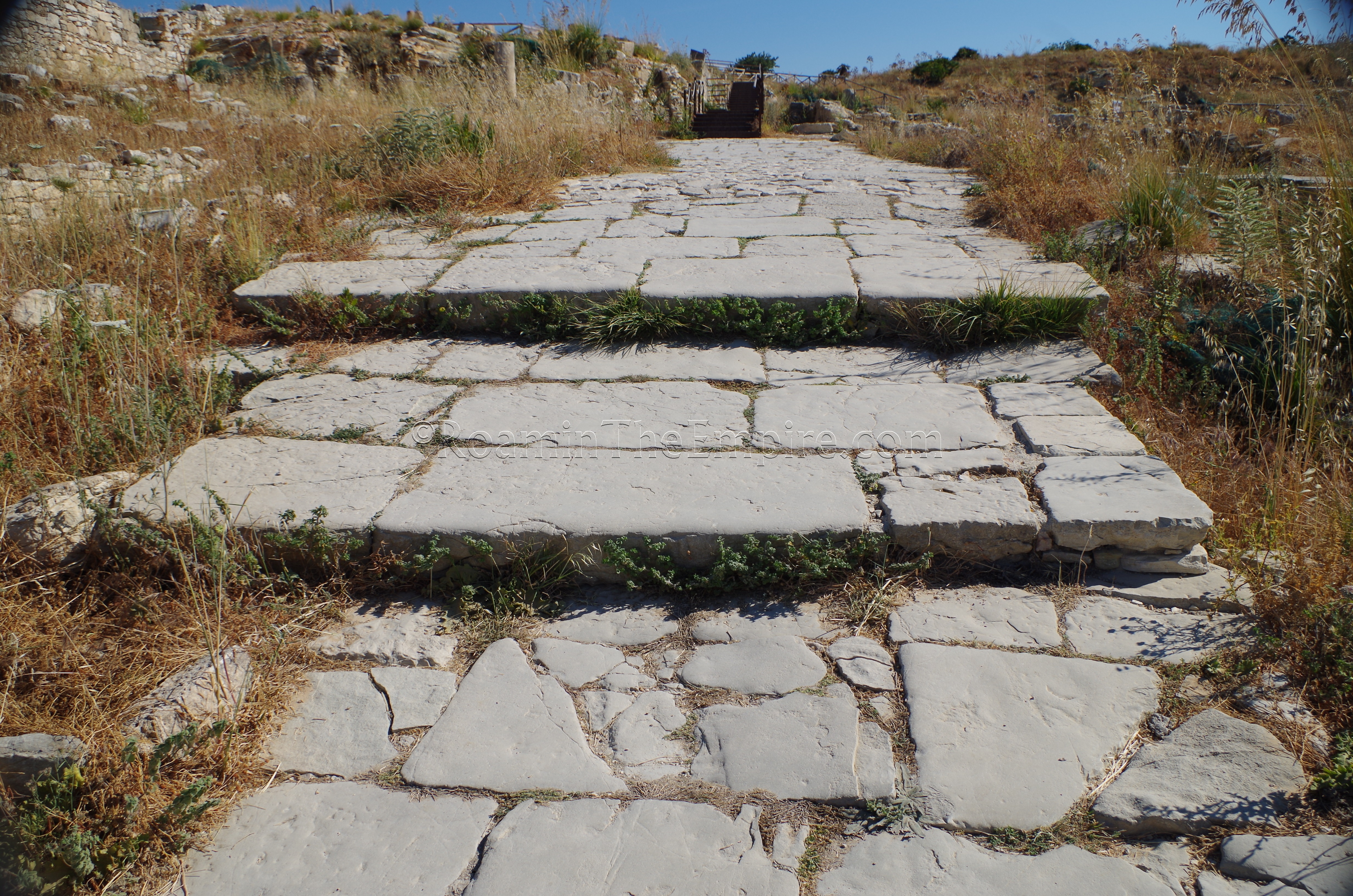
Like Eryx, Segesta does not seem to have ever actually been colonized by the Greeks, though the Greek presence on the island (particularly the Ionian Greeks) did have a large impact on the culture of those at Segesta, more so than at Eryx, which gravitated more towards Punic influence. By the time Segesta enters into the historical narrative in the early 6th century BCE, it seems to have already been embroiled in conflict with their southern neighbors, the city of Selunite (Selinus), a colony of Doric Greeks from Megara Hyblaea on the eastern coast of the island, who were in turn colonists from Megara in Greece. Inconclusive conflicts are noted in 580-576 BCE and 454 BCE, possibly as Selunite sought a port on the Tyrrhenian Sea.
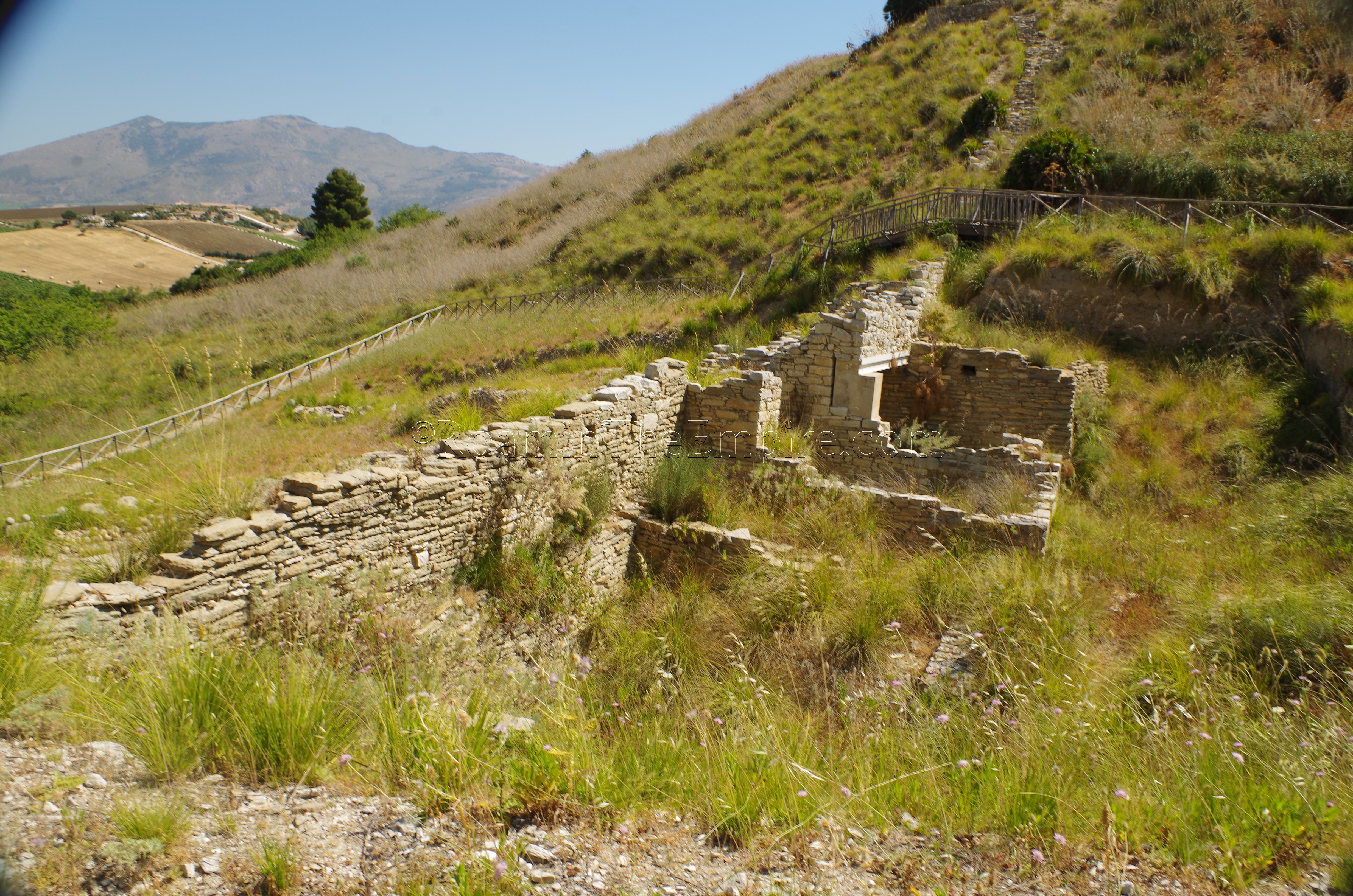
At some point in the latter half of the 5th century BCE, Segesta and Athens entered into some kind of alliance. An incomplete inscription, now housed at the National Archaeological Museum in Athens attests this alliance, but the name of the archon in the year the alliance was formed is incomplete, leading to some debate as to what year it was actually signed. It is pretty universally accepted that the alliance did not come into being before 460 BCE. In any case, an alliance was formed with Athens sometime between 460 BCE and 416 BCE, when war again broke out between Segesta and Selunite. It was in 416 BCE that, after first unsuccessfully requesting aid from Acragas (Agrigentum), Syracuse, and finally Carthage, Segesta sent appeal to Athens for intervention in the conflict on their side when Selunite successfully petitioned Syracuse for help, leading to an initial defeat for Segesta. The Athenians sent an envoy to Segesta, who claimed to be able to fund part of an Athenian military force’s cost of intervention, and the Segestans amusingly tricked the Athenians into believing the city was wealthier than it actually was by using the same gold and silver plates at every stop the Athenian ambassadors made in the city, sending them ahead at each stop to keep the appearance of widespread wealth in the city. The Athenians returned with a favorable report and a contingent of those from Segesta to plead the case of the city, ultimately resulting in a decision by Athens to intervene.
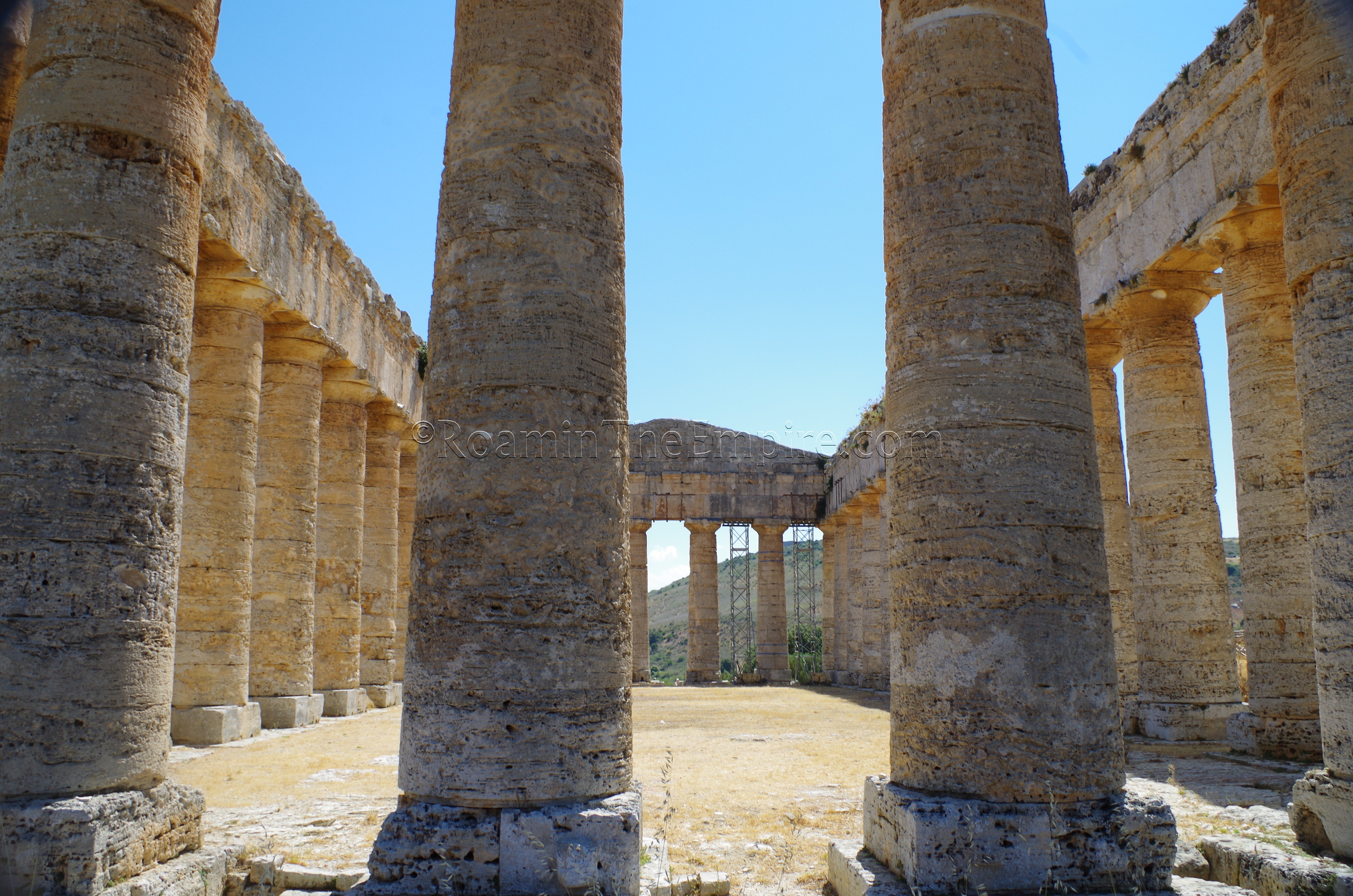
It was this appeal by Segesta that was a precipitating event in the disastrous Sicilian Expedition by the Athenians. Though the Athenians were looking for a pretext to check Syracuse’s power in Sicily, the Segestan appeal provided a pretext for a military expedition to the island. After the destruction of the Athenian expedition at Syracuse in 413 BCE, Segesta conceded territory to Selunite, but Selunite pressed hostilities and Segesta then appealed to Carthage for help, which eventually tipped the balance of the conflict in favor of Segesta and resulted in the destruction of several cities including Selunite.
Segesta remained allied with Carthage and was besieged by the tyrant Dionysios of Syracuse in 397 BCE when he led an unsuccessful campaign to drive the Carthaginians off the island. Another attempt by the tyrant Agathocles of Syracuse to expel Carthage from the island resulted in the destruction of Segesta and temporary renaming as Dikaiopolis by Agathocles in 307 BCE. A peace treaty the following year returned Segesta’s name to the city. After more than a century of alliance with Carthage, Segesta threw in their lot with Pyrrhus in 276 BCE when he sought to drive the Carthaginians from the island. The eventual defeat resulted in Segesta returning into the fold with the Carthaginians, probably after some repercussions against the city by the Carthaginians.
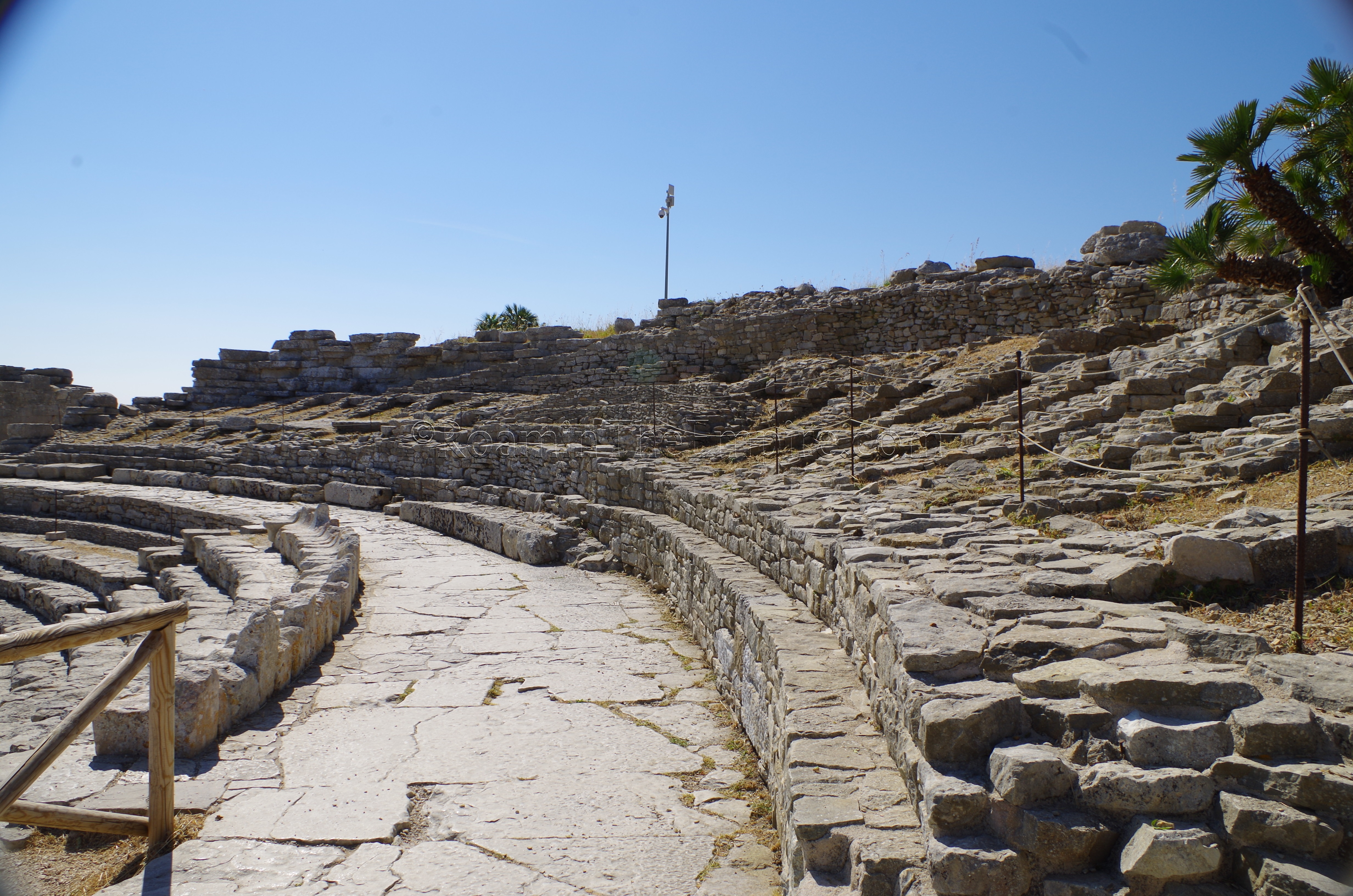
When the First Punic War broke out in 264 BCE between Carthage and Rome, Segesta initially remained loyal to Carthage and was attacked by Appius Claudius in the opening year of the conflict, but not taken. Not long after that, the Carthaginian garrison there was killed and Segesta declared its allegiance to Rome. This resulted in a Carthaginian siege of the city that apparently took a heavy toll on the inhabitants before it was broken by Gaius Duilius following his victory at the Battle of Mylae in 260 BCE. At the conclusion of the First Punic War, Segesta was one of five Sicilian cities given status as civitates sine foedere immunes ac liberae; a city free of taxation. This was probably the result of a combination of Segesta’s early defection to the Romans as well as their claimed Trojan heritage.
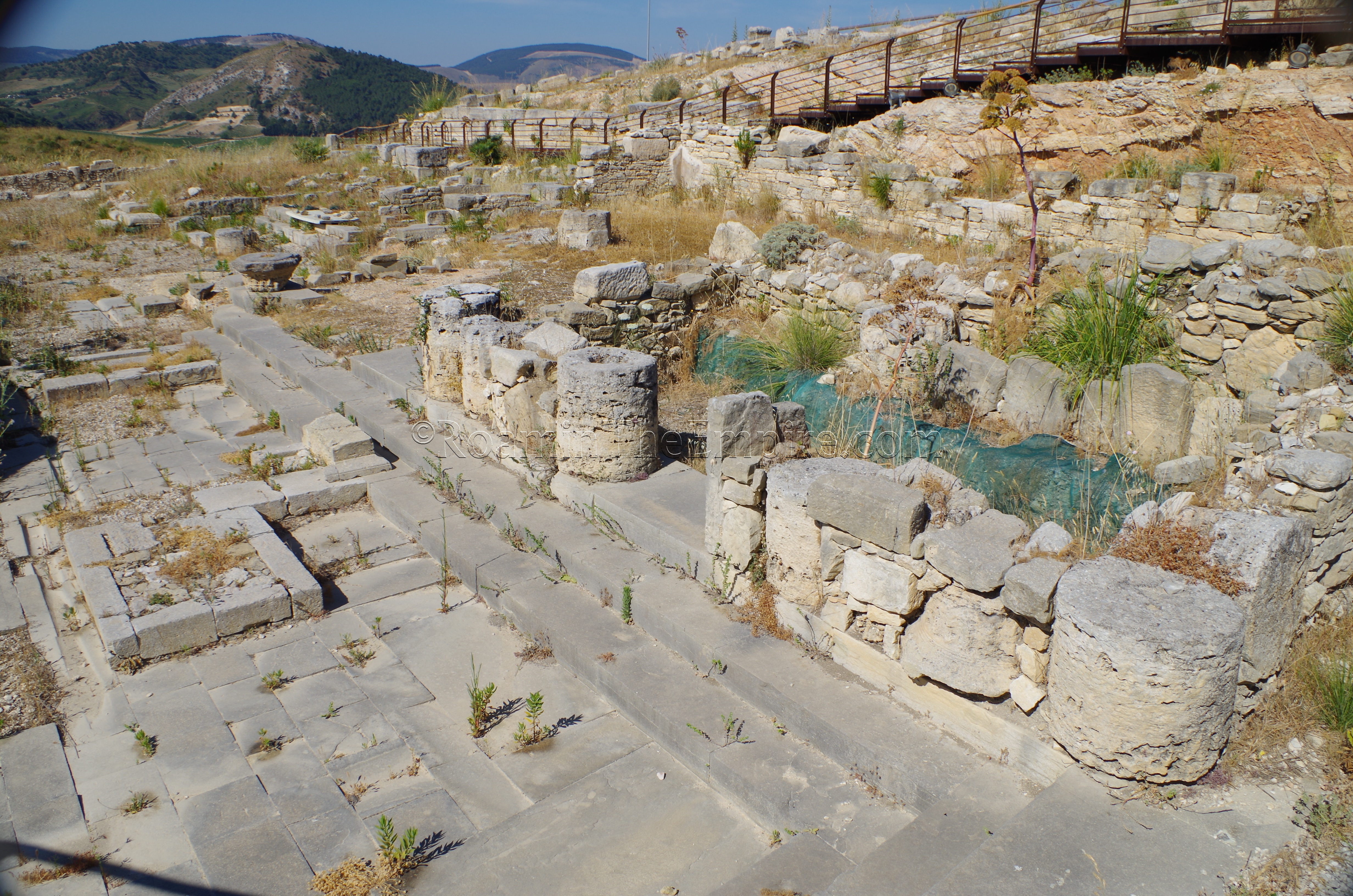
Following the destruction of Carthage at the conclusion of the Second Punic War, Scipio Africanus is said to have returned a statue of Diana to Segesta, probably taken from the town by the Carthaginians after Segesta’s defection to Pyrrhus. The city is also noted as being one of the centers of rebellion during the Servile War in 102 BCE. With relative peace coming to the island under the Romans, the defensive hilltop position of the city was no longer necessary, and it seems as though much of the population eventually moved north near the present-day city of Castellammare del Golfo, though mentions in Cicero’s In Verrem indicate it was still a sizable city at that time. By the time of its mention in Pliny, the city is said to have Latin Rights. By the 9th century CE, the site seems to have been largely abandoned, probably due to Saracen raids, and is intermittently occupied on a smaller scale over the next few centuries. There are a few remains from later periods at the site (church, mosque, fortifications).
Getting There: As was the case with all the sites I visited in Western and Central Sicily, I had access to a car, which made navigating the island a lot easier than relying on spotty public transport. So, while I cannot speak specifically to the experience or validity of getting to Segesta by bus, there does seem to be one daily bus departure from Palermo to Segesta. At 8:50 daily, except Sundays and holidays, there is a bus departure from Piazza Politeama in Palermo that arrives at the archaeological park at 10:05. There are two departures from Segesta to Palermo, though not back to Piazza Politeama, but instead to the train station. Those departures are 11:45 and 15:40. The trip is 8 Euros one-way and 12.70 Euro roundtrip. Updated information can be found here. By car, Segesta is off the A29/E933 between Palermo and Trapani. When I went, the parking lot at the actual site was closed and we were told to use a parking lot a kilometer and a half, near the highway, and take a shuttle to the archaeological area.
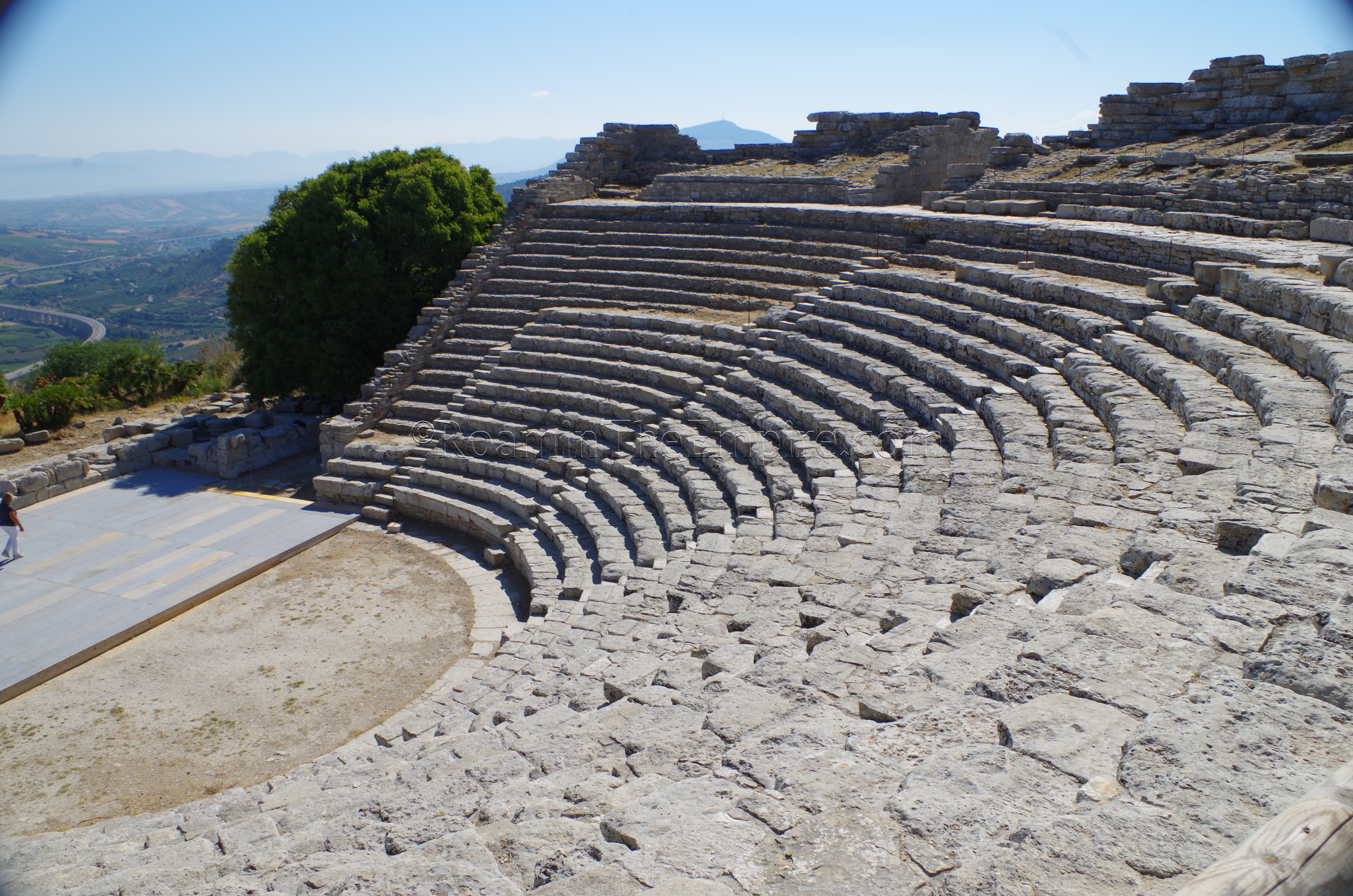
The archaeological site doesn’t really have an address other than Contrada Barbaro, 91013 Calatafimi-Segesta. Between March 27th and September 30th the site is open daily from 9:00 to 19:00. From October 1st to October 31st, and from March 1st to March 26th it is open from 9:00 to 18:00. And the rest of the year it is open from 9:00 to 17:00. Entrance to the site is 6 Euros. There is also a shuttle that runs from near the ticket office to the top of the hill where most of the remains are situated for 1.50 Euros round trip. Parking at the nearby parking lot was no more tha 5 Euros (per car) and included the shuttle from the parking lot to the entrance of the archaeological park for all occupants.
From the ticket office there is, again, a shuttle that runs up to the main part of the settlement with the agora and theater. It’s not a terrible walk up; about a kilometer with a 130 meter elevation gain, but it saves a little time if there’s not a terrible line for the shuttle, and certainly a bit of energy, as it is quite warm in the summer. There are a few things to see between the ticket office and the top of the hill, but, it’s easier to walk down and see those things. As is the case with many things in Italy, the line for the shuttle going down was quite chaotic, not to mention lengthy, so, walking down was an easier option anyway.
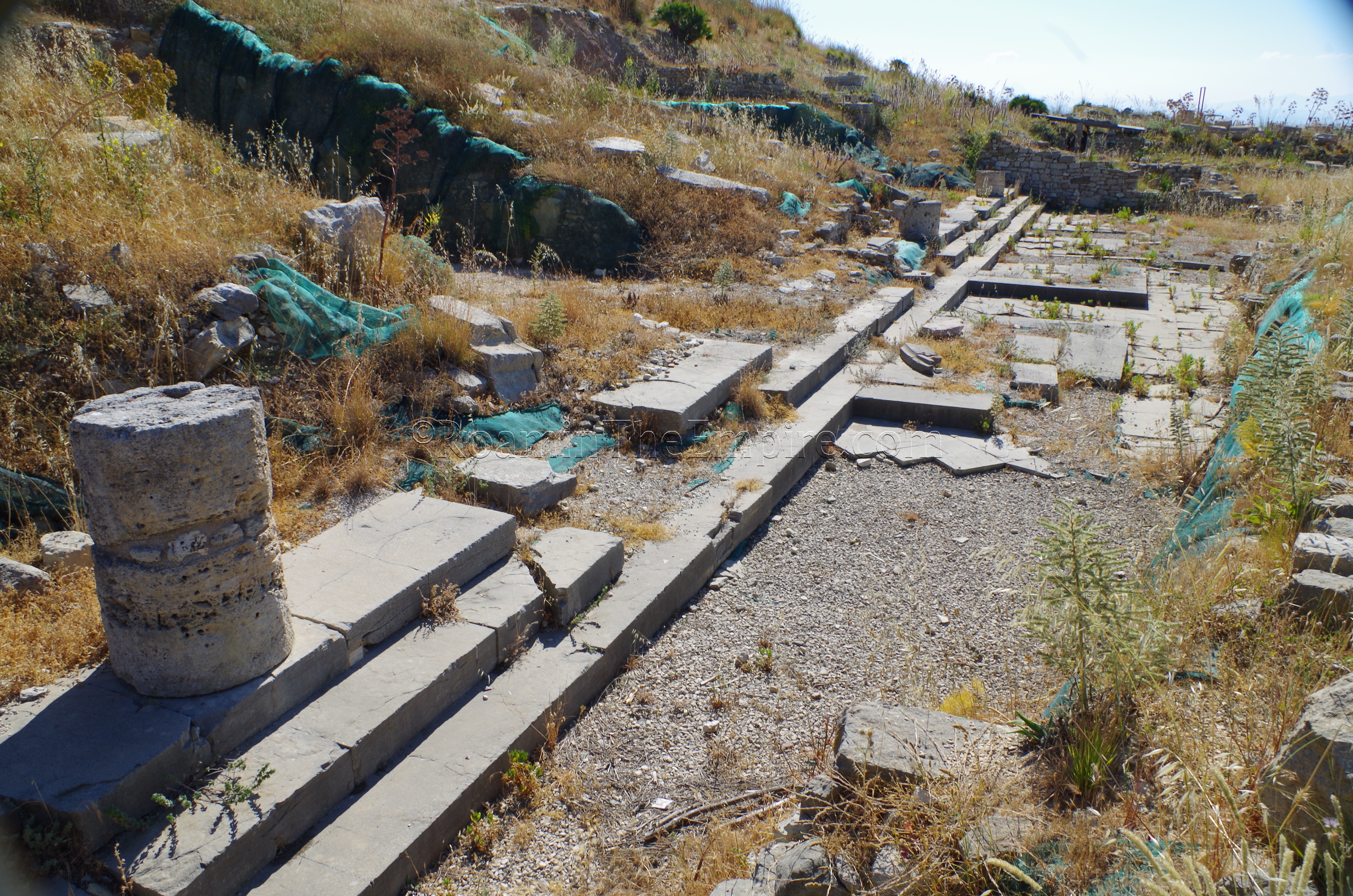
The shuttle stops right below the agora area of Segesta. Though the agora is obviously a building of Greek origins, the actual construction date of most of what remains seems to be in the middle to late 2nd century BCE, after the city was well under Roman control. The destruction of the city in 307 BCE, Carthaginian repercussions after the defection to Pyrrhus, and a pair of sieges during the First Punic War also likely necessitated some larger building projects after the end of the latter in 241 BCE. The road extends up into the open area of the agora, while a path leads up to the western side of the stoa of the agora. Along this path a 1st century CE Latin inscription from the agora is displayed. Though the covering of the inscription is dirty and sun-faded, the inscription can still mostly be seen, and apparently was a drain covering from the square of the agora, paid for by an Onasus and Sopolis, that was later reused in a late antique tomb. The paving in the area around the inscription has also been dated to the early imperial period, as has a portion in the southwest of the agora, which may be a base for a 1st century CE temple.
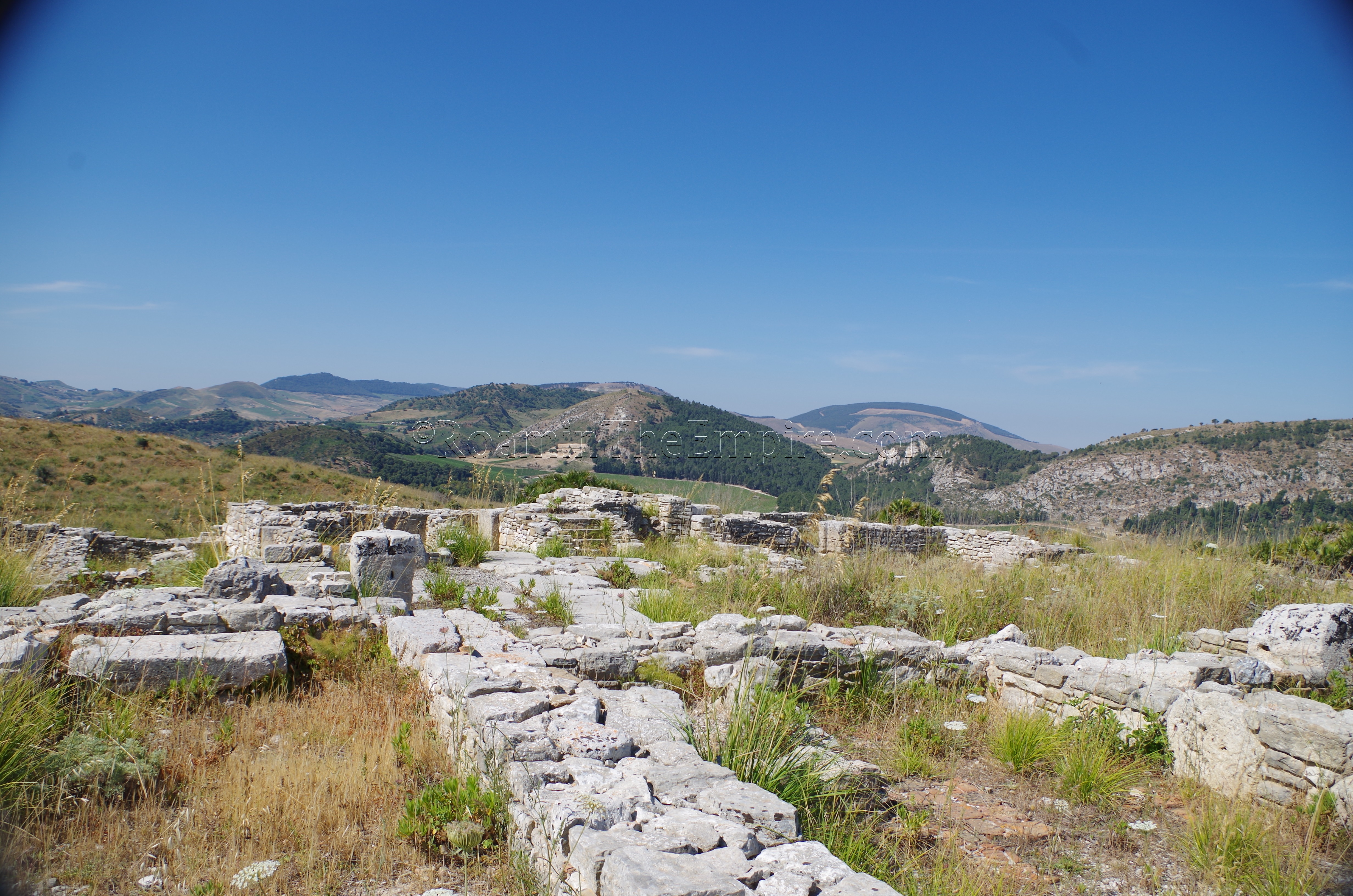
To the west of that path, is the second terrace, the acropolis area of the site. Unfortunately the signage for the site isn’t very extensive. While there are some signs giving general information, there is not much explaining the specific structures present. This is especially true for the agora/stoa area and the acropolis. Much of what remains in the acropolis area dates to the middle to late 2nd century BCE, and the primary identified remains are that of the bouleuterion. The macellum is also supposedly in this area, according to a sign near the temple, but, the structure is not identified any further. On east of the agora/stoa are some additional remains of unspecified buildings, but that area was blocked off and not able to be visited.
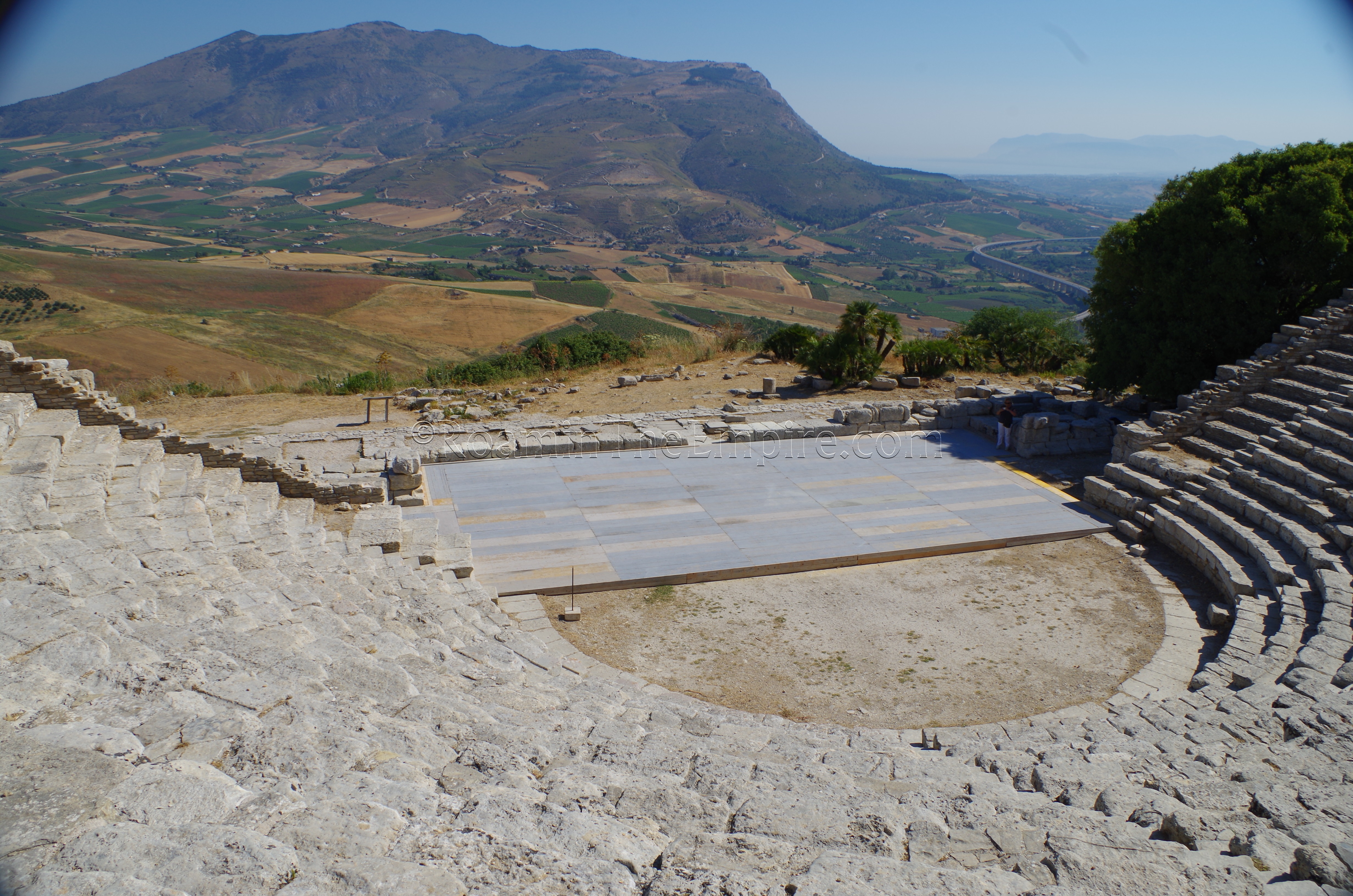
The other primary remains on the top of the hill are that of the theater. Again, the dating of the theater seems to be of the late 2nd century BCE. Though the general structure of the theater owes more to the Greek design, it does incorporate one more distinctly Roman feature of theater buildings; the upper levels of seating are supported by foundation walls rather than using the natural landscape. The capacity of the theater is estimated at about 4,000. The views from the theater are quite picturesque, as the cavea overlook the valley below, and other than the well preserved temple in another part of the site, the theater is really the primary draw and where most of the tour groups go, skipping past the agora and acropolis.
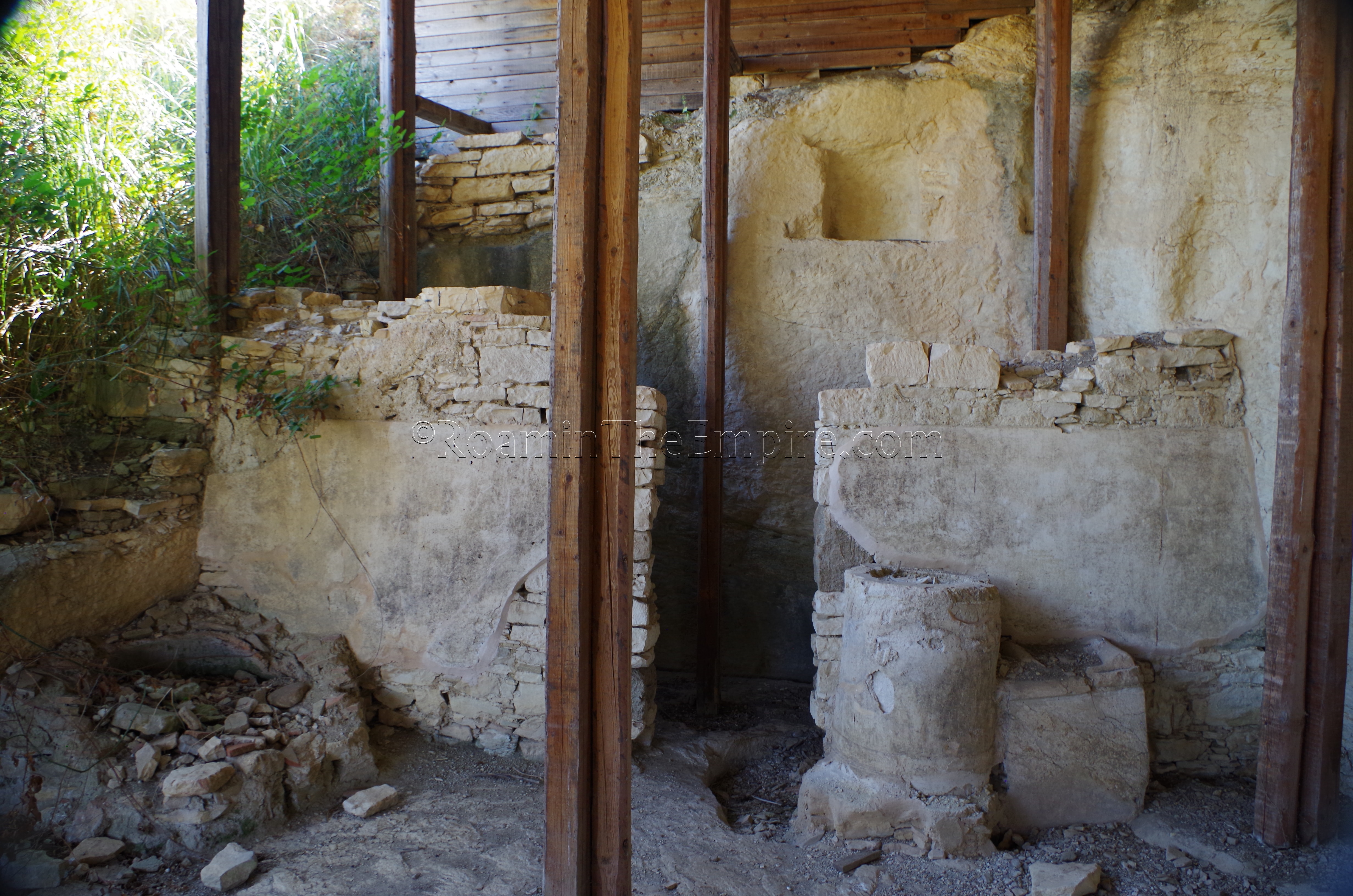
As mentioned before, there are few things to see on the way down the hill and back to the ticket office. There are a few paths that run adjacent to the road, but, in a few cases it is necessary to actually use the road, which is only traveled by the shuttle buses. A little ways down the road, on the right side, are the remains of a cave dwelling. The cave seems to have first been occupied in the 6th century BCE of which some holes drilled in the rock for wooden supports can be found. The structure was occupied again in the 2nd century BCE and then underwent a significant renovation during the Augustan period. Before the end of the 1st century BCE, the cave was abandoned due to a fire and the area was subsequently used as a waste dump before being occupied again in the 12th or 13th century CE.
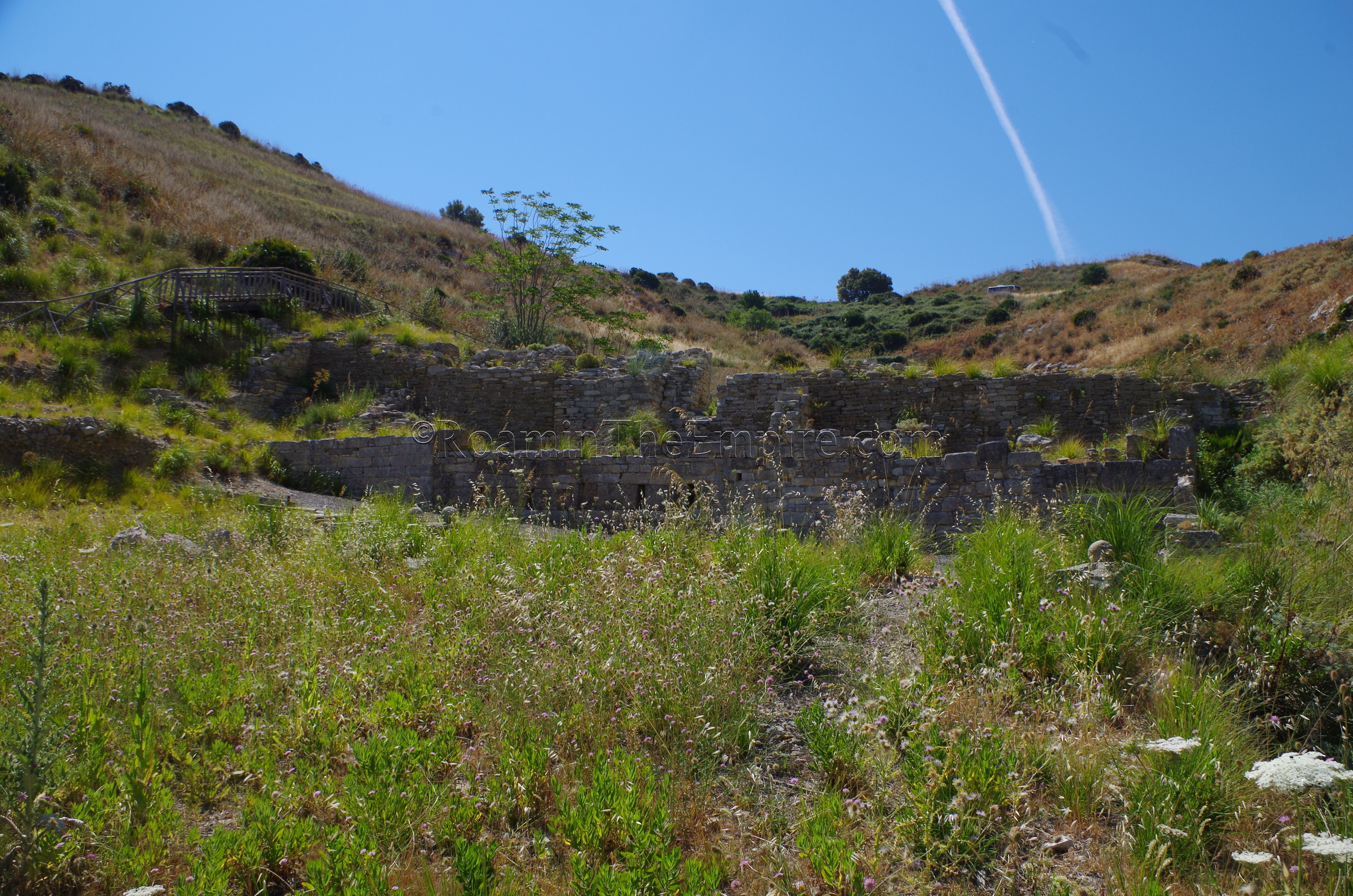
Just below the house are the remains of some of the upper fortification walls, including three towers, dating to the early imperial age. One of these towers is located right next to the path running adjacent to the road down the mountain. Also visible from this point, but located near the bottom of this hill, running across the valley that runs up this side of the hill, is the Porta di Valle, a gate and set of fortifications originally dating back to the 5th century BCE. These particular fortifications underwent many phases of development through the Roman period, and eventually being used as an oil mill after the lower fortifications were rendered obsolete by the construction of the upper fortification wall, owing to the shrinking size of the city. The Porta di Valle can be visited from a small path at the bottom of the hill, near the parking lot.
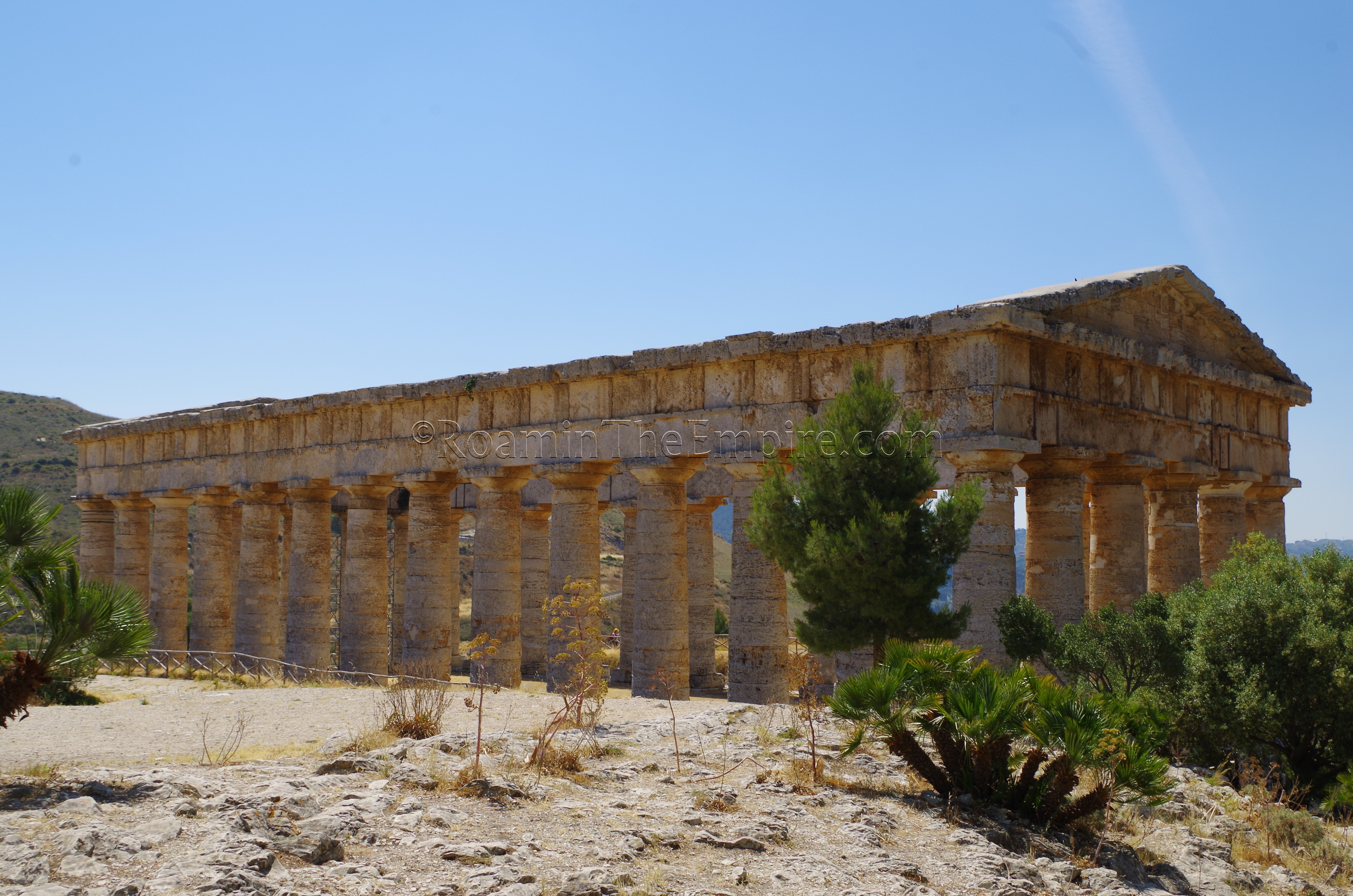
From the ticket office, it is a short signed path up to perhaps the centerpiece of Segesta; the Doric temple. Much about the temple seems to be subject to some debate. While generally accepted to be constructed in the middle to late 5th century BCE, there are some sources that seem to claim a much later date for the temple. The temple itself is considered to be in an unfinished state and an interesting, though unsubstantiated anecdote has formed around that fact. One theory states that construction began on the temple as part of the program to convince the Athenians of the city’s wealth and ability to pay for the Athenian’s military expedition to the island in 415 BCE, but once the Athenian ambassadors left, construction was halted on the temple and it was left unfinished. The unfinished nature of the temple during this period could just as well have been due to an interruption by the ongoing conflicts with Syracuse and Selunite at the time. A further theory states that the temple was indeed finished and that it was never intended to have a cella (one of the missing elements leading to the conclusion that it was unfinished) and rather functioned as an open air cult area for the Elymian population, which may have engaged in Eastern religious practices. Unfluted columns and a lack of metopes are also indicators of the unfinished nature of the temple. No deity has ever been conclusively identified with the space.
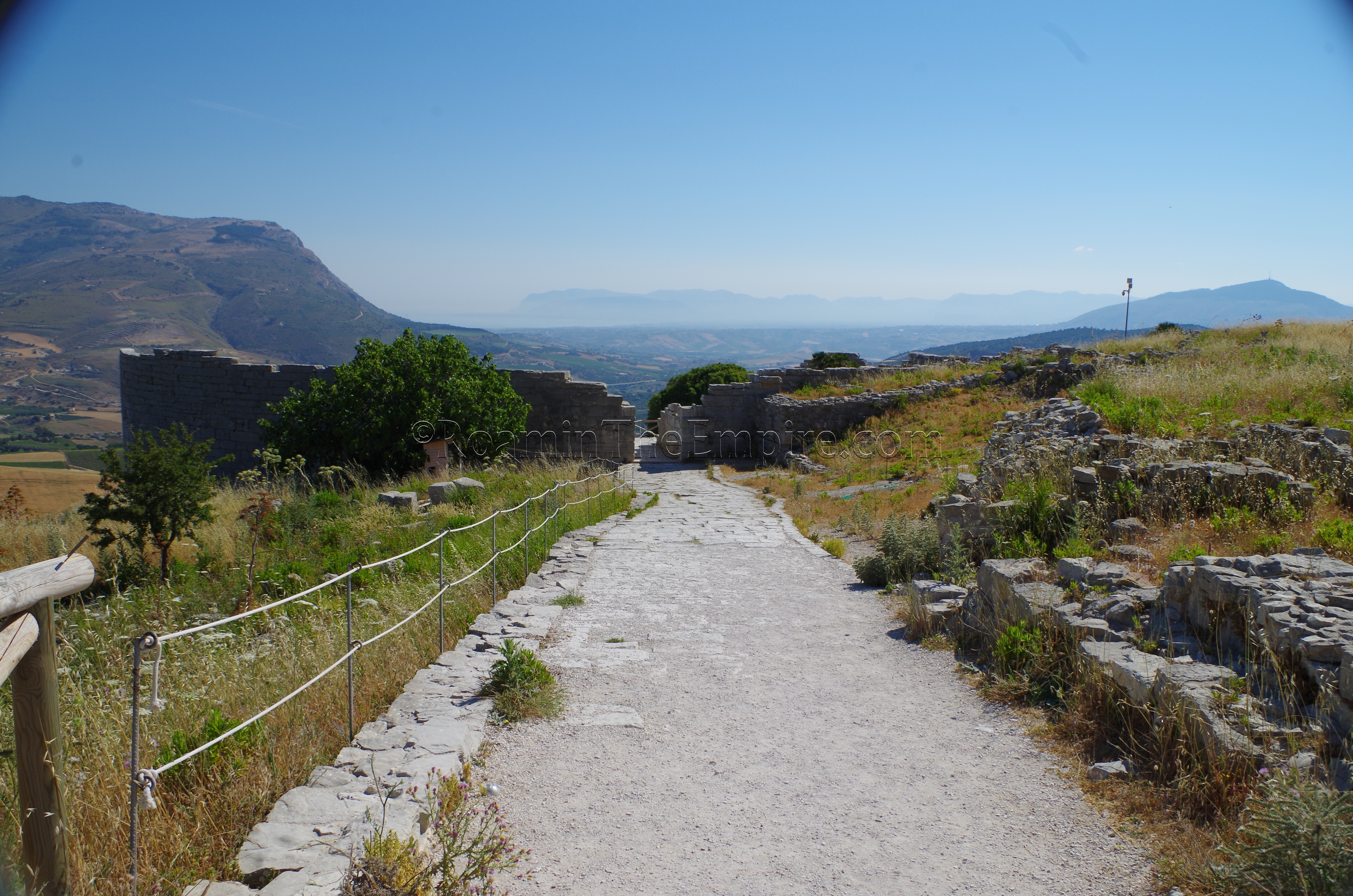
As I mentioned before, there’s a bit of signage at the site, but, much of it is very general and lacks some specificity, particularly in some of the areas where the remains are less straightforward. Most of the signs on the site, however, are posted in Italian, French, Spanish, English, and German, though, which is quite helpful, if not a bit unusual. Overall, the site is well worth the time to visit, just because of the temple and theater alone, which makes it attractive to those with even the most passing interest in archaeology. I spent about an hour and a half at the site, and that was ample time to see everything. Even though it is a rather cumbersome site to reach without a personal vehicle, it is still very much worth a visit.
Sources:
Cicero, In Verrem, 2.4.72-83.
Diodorus Siculus, Bibliotheca Historica, 4.23, 5.9, 11.86. 12.82-3, 13.43-44, 20.71, 22.10, 23.3, 23.5, 36.5.
Holloway, R. Ross. Archaeology of Ancient Sicily. Routledge, 1991.
Olivito, Riccardo & Taccola, Emanuele. “3D Modelling in the Agora of Segesta: Techniques and Data Interpretation. Archeologia e Calcolatori, vol. 25, 2014, pp. 175-188.
Pliny the Elder, Naturalis Historia, 3.14.
Polybius, Historia, 1.24
Smith, Christopher John. Sicily from Aeneas to Augustus: New Approaches in Archaeology and History. Edinburgh Univ. Press, 2007.
Smith, William. A Dictionary of Greek and Roman Biography and Mythology. I.B. Tauris, 2007.
Smith, William. Dictionary of Greek and Roman Geography. Walton & Murray, 1870.
Strabo, Geographica, 4.6, 6.1.
Thucydides, History, 6.2, 6.6, 6.8, 6.46, 6.62, 7.57,
Stillwell, Richard, William L. MacDonald, and Marian Holland. McAllister. The Princeton Encyclopedia of Classical Sites. Princeton, NJ: Princeton U Press, 1976.
Vergil, Aeneid, I.550.


